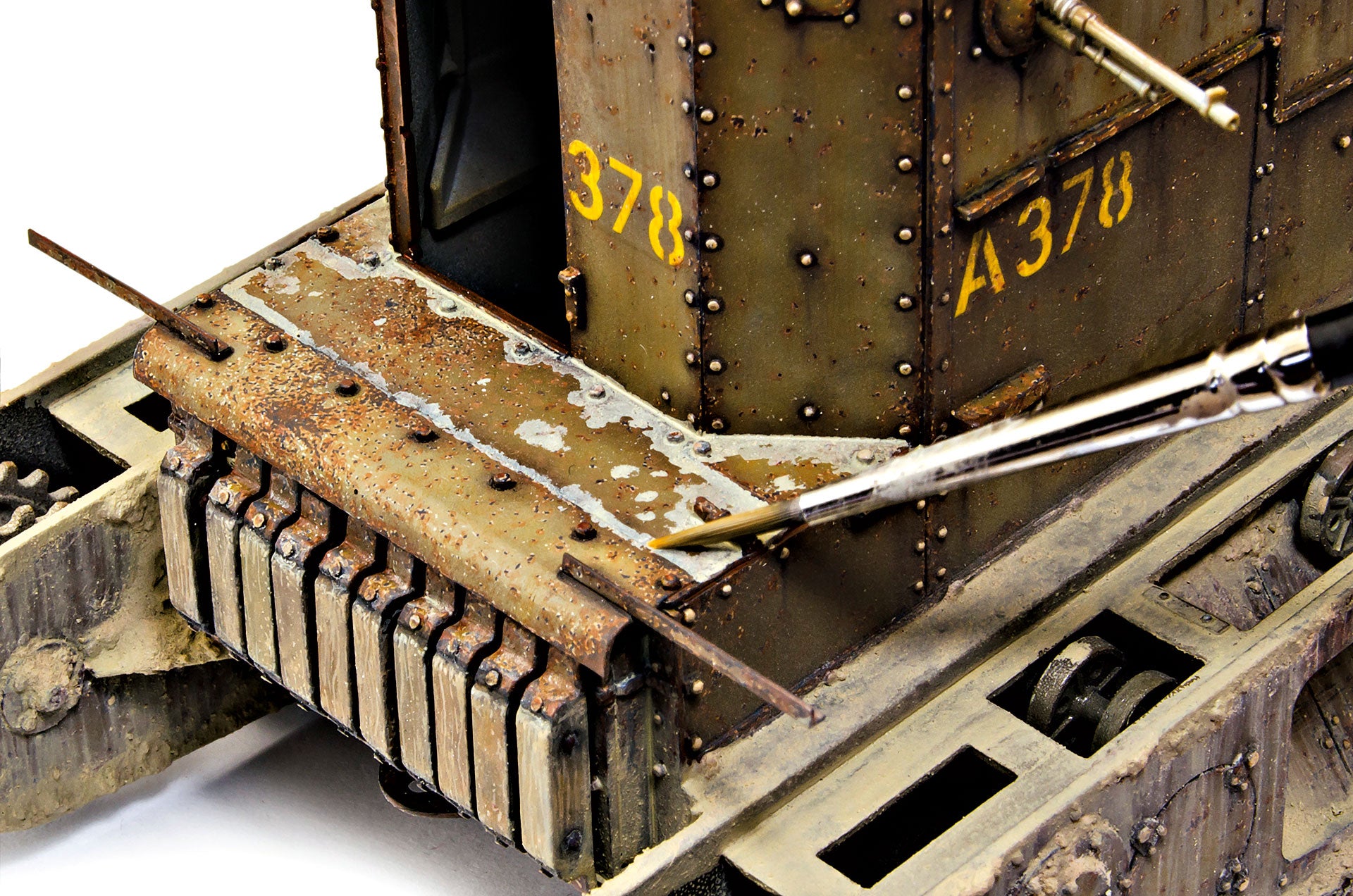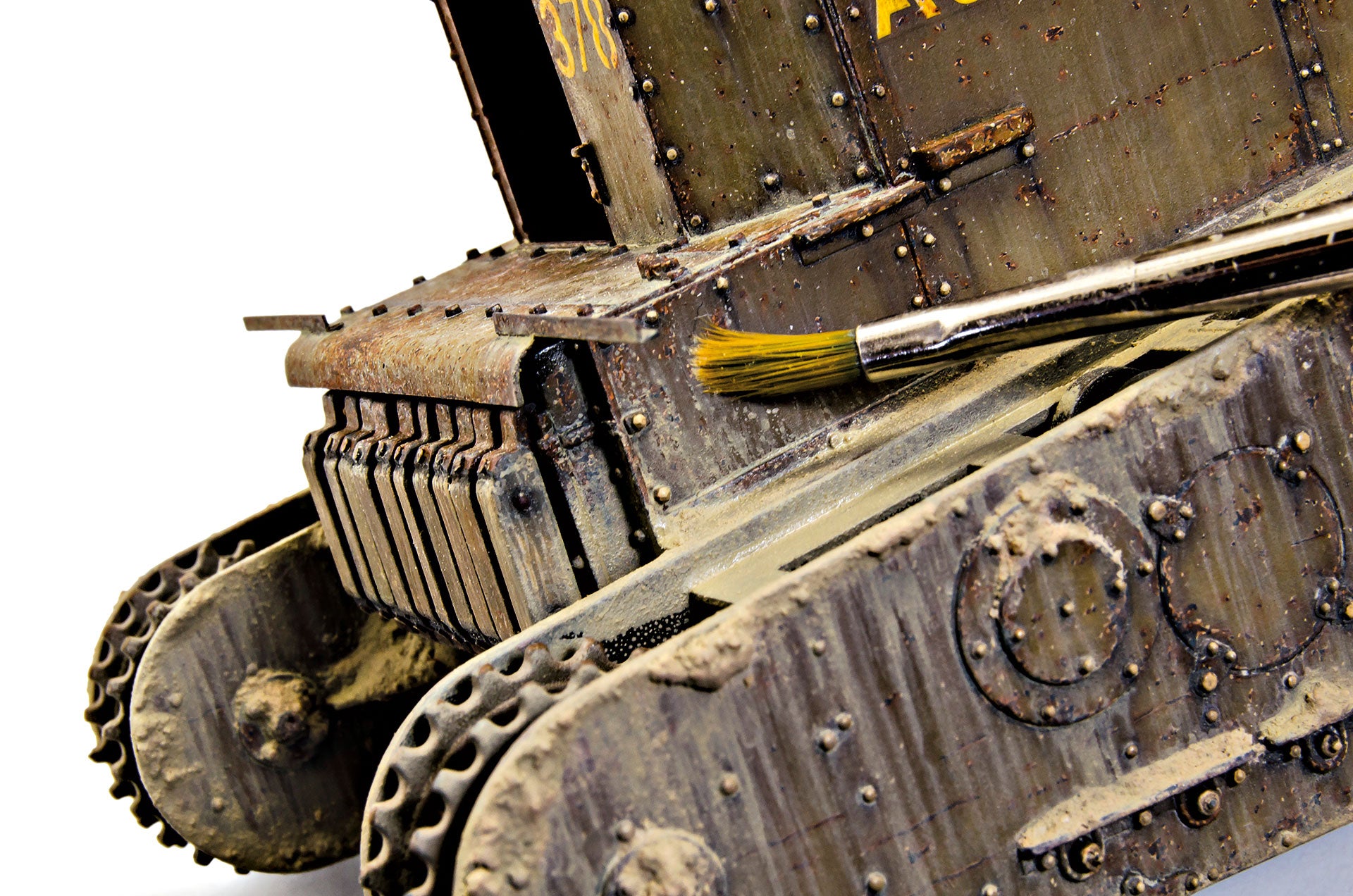 Loading... Please wait...
Loading... Please wait...Wilder Aqualine Tutorial - Painting and weathering the Whippet - Earth Tones
Posted by Adam Wilder on 30th Aug 2017
Okay, so this might be one of the most involved steps on an armor subject. Of course, only if you decide to add complex weathering to your model.
British WW1 tanks are specific when it comes to mud and dust as large sections of their sides are weathered like a running gear due to the tracks running along the entire side. This applies most extremely to British Mark tanks. There are, of coure, some exceptions in WW2 armor too – amphibious LVT’s, Churchill tanks (without fenders) to name a couple.
I wanted to add moderate amounts of mud on the lower hull sides in order not to cover all of the chipping effects.
Let’s see how it went.
I started by adding controlled amounts of Wilder Textured Earth around the sponsons. Once again I worked on small sections at a time.

After adding small amount of textured paste I blended the edges with a bit of water. Textured Earth dries quickly so working in small segments is crucial in order to get a natural looking effect.

I added it over raised details as well. Studying reference photos of the real tank helps to create a good idea about where the mud collected.

While the paste was still wet I dragged some of it downward. This creates subtle textured streaks that will work in conjunction with upcoming weathering steps.

The Aqua Line Dry Earth effect was continuously added into a small cup filled with water until I got to a consistency that could be applied with an airbrush.

Adam told me this line wasn’t designed for airbrush but I think with a bit of trial and error we can pull it off. Of course, it’s not Tamiya tier of precise super-duper-stormtrooper airbrushing, but it works well for our purpose. I covered the entire sponson with a few layers until I built up a semi-transparent coat.

Now using a fine brush and a small amount of water I created vertical streaks in the airbrushed coat of dust. This goes super easy and you can correct any mistakes as the paint can be reactivated at any moment.

Some of the paint, mixed to a bit thicker consistency than before, was brush painted over the large clumps of mud.

More fine streaks were brush painted and carefully blended. The underlying layer of reactivable paint might cause some trouble, but with a bit of care and patience, we can blend the paint without damaging the previously created effect.

Tighter areas require more precision so I switched to brush application and painted random spots of dust around bolts and crevices.

I blended the effect using a tapping motion with a soft brush.

Aqua Line can be applied by speckling too. Here I’m adding a small amount of thicker paint around the rear of the tank. Speckling will also create a fine texture.

The effect can be dragged down with a brush making the effect look much more natural.

Brushing strips of paint and then blending them will create intricate streaks of dust. I wasn’t honestly able to achieve this effect with enamels or oils before.

Now it’s time to add darker damp earth stains. Here we have 2 options. If we want to avoid smelling enamels we should seal the dust layer with a fine mist of matt varnish in order to build up further layers without much worry of damaging it, or we can just switch to enamels and create this effect without waiting for the dust layer to dry, as these two won’t react.

Working again in sections, I blended the mud tone with enamel thinner.

Same goes for streaking effects, just keep in mind the side of this tank is angled, so keep the streaking vertical to the ground, not to the edge of sponson.

By blending each side of the streaks we can adjust the angle but also create very authentic streaking with feathered edges and opaque center of each streak.

Okay, so now we’re done with most of the weathering! By this point we should be able to tell if we’ll end up with a nice looking model or there’s something that went wrong along the way.
The following steps are going to be pretty easy and bomb proof, so let’s chill tomorrow while weathering tracks.
